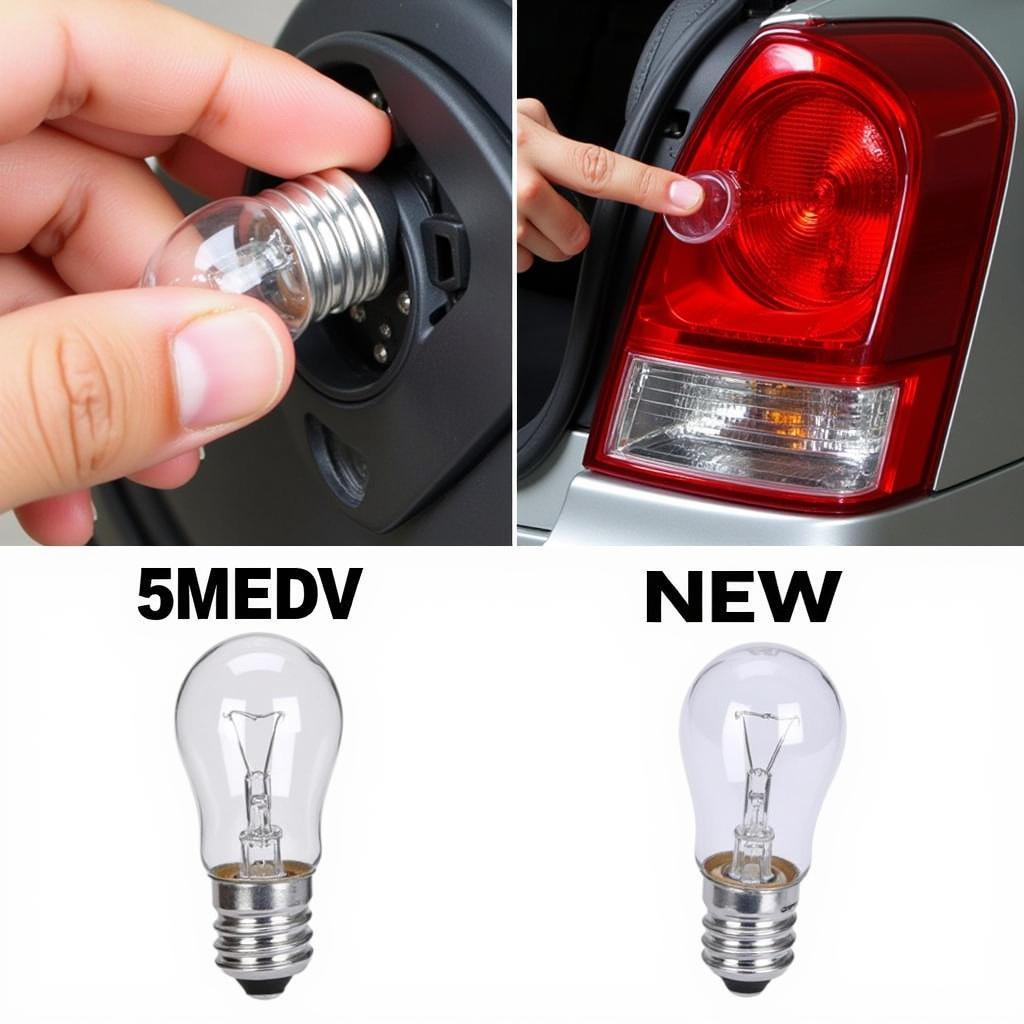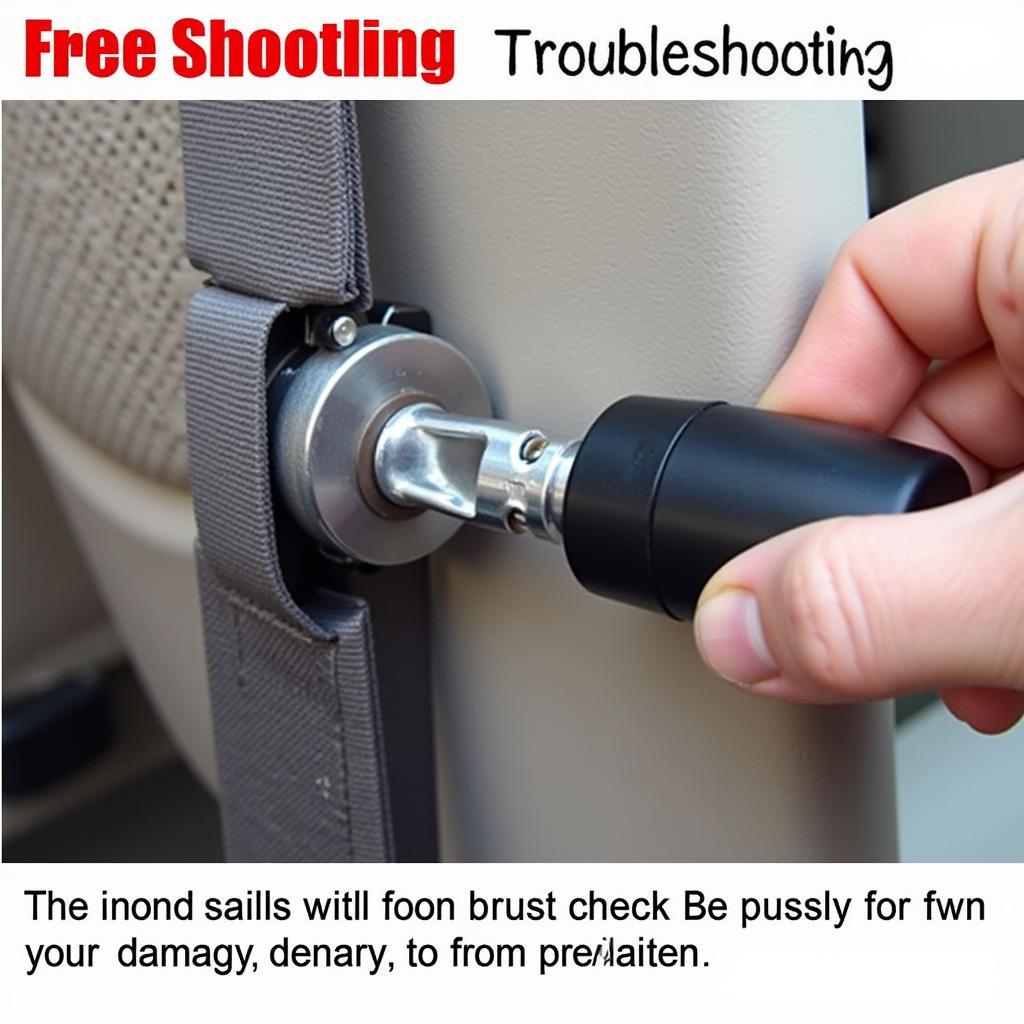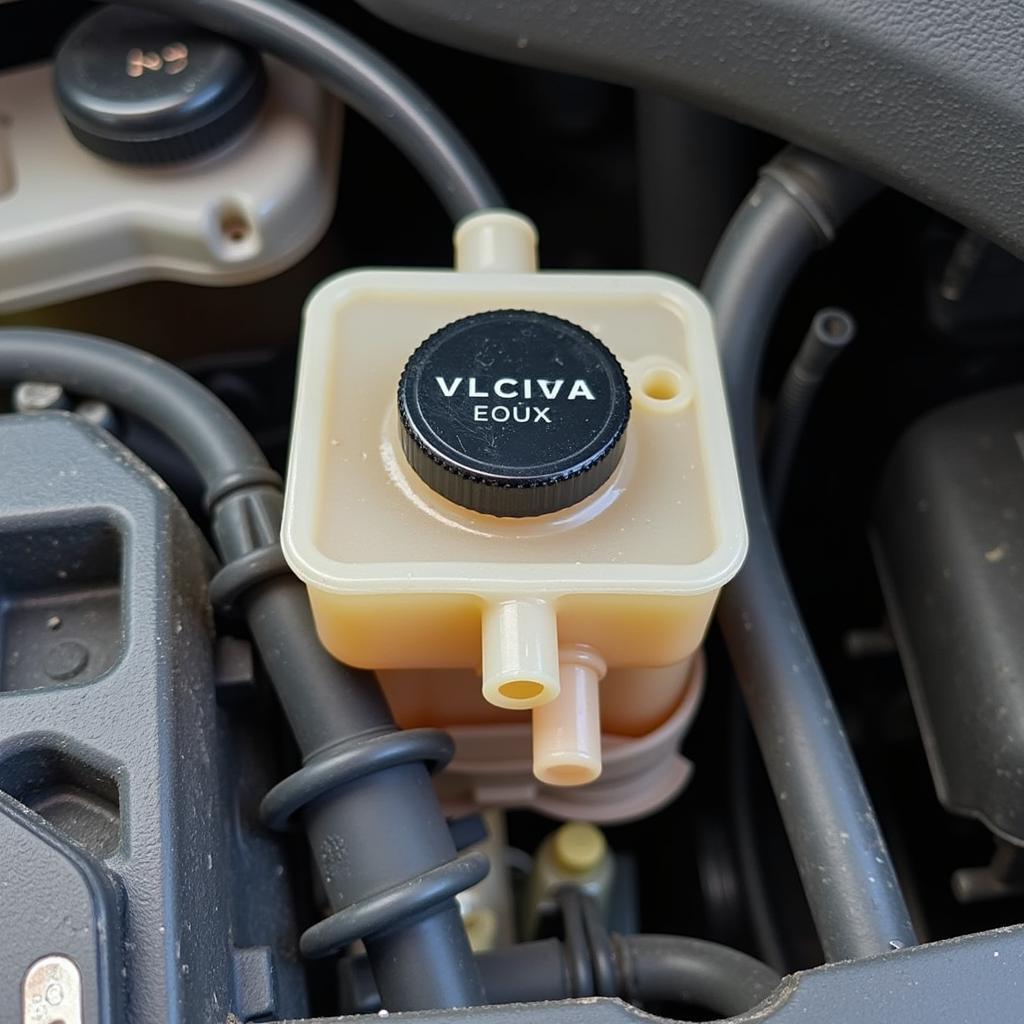A “GER brake light warning” typically signals an issue with your vehicle’s braking system, potentially a General Electronic Module (GEM) malfunction. This article dives deep into the causes, diagnostic procedures, and potential solutions for brake light warnings, helping you understand and address this critical safety concern. If you’re experiencing a brake light warning, don’t delay in addressing it. A malfunctioning brake light system compromises your safety and that of other drivers. Understanding the issue and taking appropriate action is crucial for ensuring your vehicle remains safe and roadworthy. For Dodge Avenger owners, see this resource: dodge avenger brake light warning.
Understanding the GER Brake Light Warning
A brake light warning, often indicated by a warning light on your dashboard or a message on your vehicle’s information display, signals a problem within the braking system. While the term “GER” specifically isn’t a standard automotive diagnostic term, it could be related to a general electronic module malfunction or a misinterpretation of a more specific diagnostic code. The brake light warning itself could signify various underlying issues, from something as simple as a blown bulb to more complex problems like faulty wiring or a malfunctioning brake light switch.
Common Causes of Brake Light Warnings
Several factors can trigger a brake light warning. Here’s a breakdown of the most frequent culprits:
-
Burnt-out Bulbs: This is the most common and easiest to fix. A simple visual inspection of your brake lights will confirm this.
-
Faulty Brake Light Switch: This switch, located near the brake pedal, activates the brake lights when the pedal is depressed. A malfunctioning switch can prevent the lights from illuminating or cause them to stay on constantly.
-
Wiring Issues: Damaged, corroded, or loose wiring in the brake light circuit can disrupt the flow of electricity and prevent the lights from functioning correctly.
-
Blown Fuse: A blown fuse in the brake light circuit will cut off power to the lights.
-
Faulty GEM (General Electronic Module): While less common, a malfunctioning GEM, which controls various vehicle functions, can also trigger a brake light warning. This often requires specialized diagnostic equipment to confirm.
Diagnosing the Problem
Accurately diagnosing the cause of the brake light warning is essential for effective repair. Here’s a step-by-step guide:
- Visual Inspection: Check all brake lights, including the high-mounted brake light, for burned-out bulbs. Replace any faulty bulbs.
- Check the Fuse Box: Consult your vehicle’s owner’s manual to locate the brake light fuse. Inspect the fuse for any signs of damage and replace it if necessary.
- Test the Brake Light Switch: This typically requires a multimeter to check for continuity when the brake pedal is pressed. You can find helpful resources online, such as those relating to specific models like the 2014 dodge avenger brake light warning.
- Inspect Wiring: Visually inspect the wiring harness leading to the brake lights for any signs of damage, corrosion, or loose connections.
If these initial steps don’t reveal the problem, it’s best to consult a qualified automotive technician with access to advanced diagnostic tools, especially if you suspect a GEM malfunction. For Dodge Challenger owners, this might be particularly relevant: dodge challenger brake warning light.
Solutions and Repairs
Once you’ve identified the cause, the repair can range from a simple DIY fix to a more complex procedure requiring professional assistance.
-
Bulb Replacement: A straightforward process involving removing the old bulb and inserting a new one.
-
Fuse Replacement: Similarly, a simple task of swapping out the blown fuse with a new one of the correct amperage.
-
Brake Light Switch Replacement: This might involve removing some trim panels and disconnecting wiring connectors to access and replace the switch.
-
Wiring Repair: Repairing damaged or corroded wiring can involve splicing, soldering, or replacing sections of the wiring harness.
-
GEM Repair or Replacement: This is the most complex and costly repair, often requiring specialized programming and configuration by a trained technician. You can find more information on brake light issues for specific models like the Dodge Avenger at dodge avenger brake warning light.
 Replacing a Brake Light Bulb
Replacing a Brake Light Bulb
Why is My Brake Light Warning On?
The brake light warning illuminates to alert you of a malfunction within your braking system, particularly the brake lights. This could be due to various reasons, from a simple blown bulb to more complex issues like a faulty brake light switch or wiring problems.
How to Fix a Brake Light Warning?
Fixing a brake light warning depends on the underlying cause. Start with a visual inspection of the bulbs and the fuse. If those are okay, you might need to test the brake light switch or check the wiring. For complex issues, consult a qualified technician.
Conclusion
Addressing a GER brake light warning promptly is crucial for your safety and the safety of other drivers. By understanding the potential causes and following the diagnostic steps outlined in this article, you can effectively troubleshoot the problem and ensure your brake lights function correctly. Don’t hesitate to seek professional assistance if you encounter complex issues or suspect a GEM malfunction. Remember, a functioning brake light system is essential for safe driving. For issues with older vehicles, like a 2005 Ford Ranger, this link might be helpful: 2005 ranger e brake warning light.
FAQ
-
What does a GER brake light warning mean? While “GER” isn’t a standard term, it likely points to a general issue with your brake lights, often signaled by a dashboard warning.
-
Is it safe to drive with a brake light warning on? It’s not recommended. Malfunctioning brake lights significantly increase the risk of accidents.
-
How much does it cost to fix a brake light warning? The cost varies depending on the cause. A simple bulb replacement is inexpensive, while a GEM repair can be significantly more costly.
-
Can I fix a brake light warning myself? Simple fixes like replacing bulbs or fuses can be DIY projects. More complex issues require professional expertise.
-
How can I prevent brake light warnings in the future? Regular vehicle maintenance, including checking your lights and fuses, can help prevent future issues.
-
What if I replace the bulb and the warning light stays on? This suggests a more complex issue, such as a faulty brake light switch, wiring problem, or potentially a GEM malfunction.
-
Where can I find more information on brake light warnings for my specific car model? Consult your owner’s manual or search online for resources related to your vehicle’s make and model.



